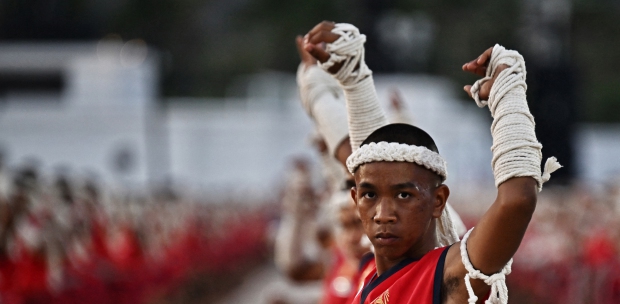LAST semester, I realised that the difficulties my students faced in understanding cultural heritage might reflect a wider issue among Malaysians in general.
They know it has something to do with history, but how? Whether it is the Bangunan Sultan Abdul Samad building in Kuala Lumpur or Chinese calligraphy or a vibrant Indian dance, priceless history is embodied in every single one.
Take the Sultan Abdul Samad building, for example. Numerous events have occurred in it and in the vicinity throughout the years. It is a shame that science has not found a way to extract priceless memories from the walls and ceilings that 'witnessed' the events.
Perhaps something can be done in the realm of science fiction. But reality requires that we manage heritage with what's available.
During my childhood, history was the most boring subject in school for most people. But not for me.
Heritage does not require you to memorise the days, months and years when certain events occurred. But it wants you to be aware of the significance of those events. If heritage is an object, it wants you to know that once it was used in a certain way that was beneficial to people at that time and place, before it was kept in a glass case in your neighbourhood museum.
If heritage is a traditional dance, then it wants you to be aware that the skills and knowledge that birthed the expressions that it is now are still alive, and are in need of assistance to stay alive.
Intangible cultural heritage such as dances, martial arts and performing arts are not objects that can be kept in a display case. Their safeguarding requires perpetuity of movement, gestures and performances, whether public or private, by traditional owners, performers, and other stakeholders.
Both tangible artefacts and intangible manifestations are cultural heritage. The word 'cultural' is to differentiate these man-made or man-influenced objects from naturally formed heritage such as Taman Negara and Gunung Mulu.
However, not everything that's made by man is heritage: It is what man desires to leave behind for his or her future generations. This means that a cultural heritage must contain values other than just historical that make it too precious not to be bequeathed to family members or those you can trust.
Without a sharing mindset, cultural heritage might be lost to us or be kept hidden away in boxes or thrown and burned by unaware and unappreciative descendants.
Imagine a boy who once played with a collection of antique toys with his father. The boy is now in his 70s. At a collectibles' museum, he is surprised to see that the same toys are kept in pristine condition.
The original owner of the toys might have no connections to the elderly man, but the selfless act of sharing can bring back joyful memories to those who encountered the same objects in the past.
In places like Pekan Rabu in Alor Star, there are 'kuih' vendors who still use traditional skills and tools to produce delicacies such as 'kuih peneram' and 'kuih karas'. I showed my mother how a Japanese YouTuber couple were mesmerized by this use of intangible cultural heritage. She then reminisced about how her grandmother made 'kuih' for her when she was young.
If you think that these examples focus on the embodied historical value of cultural heritage, you are right. However, they also represent social values — the act of sharing between different backgrounds.
Intangible skills and knowledge are also contributing to the economic value of cultural heritage. This can be seen in the production of unique 'kuih' that is always in high demand.
If you are not convinced about the economic value of cultural heritage, then look no further than the batik and songket industries in Kelantan and Terengganu.
These traditional industries still survive and prosper mainly due to the characteristic of intangible cultural heritage, which is the capacity for change. Unlike fixed structures — objects, buildings and monuments — intangible cultural heritage is 'alive' alongside the traditional owners.
A performance such as the wayang kulit in Asun can adapt to any context, whether it is an official government event or in a village. It can also use standard Bahasa instead of the distinct Asun dialect.
Tangible heritage is a fixed structure, but it can be repurposed. We can see this being done in old buildings in the country.
The structure has not changed, but the 'kopitiam' space inside is turned into a hotel, for example. Chinatown in Alor Star is filled with trendy cafes and shops that cater to both the young and not so young.
As you can see, heritage is more than just history. It is history redefined through the inheritance of objects and expressions from the past by current and future generations.
I cannot stress enough the importance of making our children aware of our cultural heritage. Doing this will encourage them to support conservation.
The writer is senior lecturer, School of Tourism, Hospitality and Event Management, Universiti Utara Malaysia. He can be reached at [email protected]





